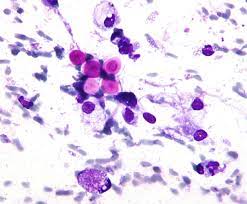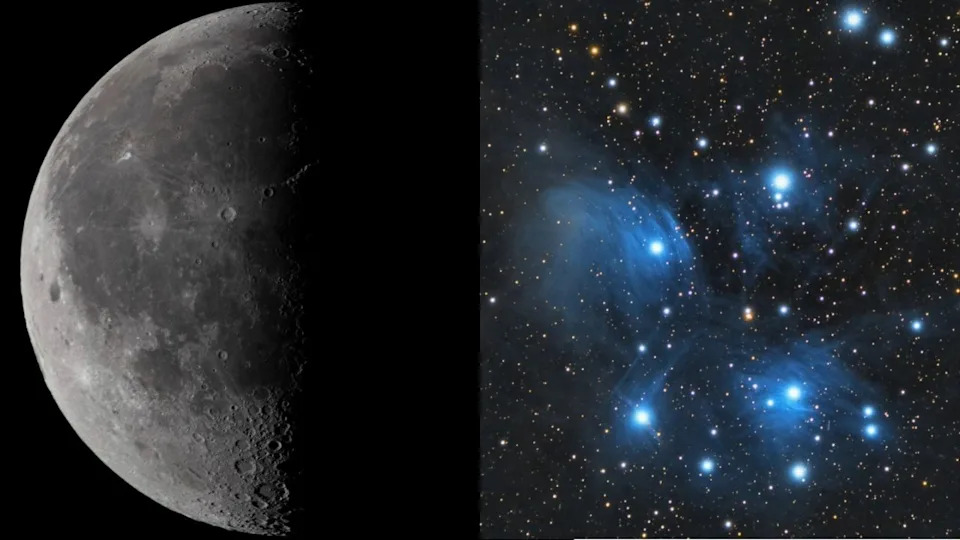DNA has an expiration date. But proteins are revealing secrets about our ancient ancestors we never thought possible.
When you buy through links on our articles, Future and its syndication partners may earn a commission.
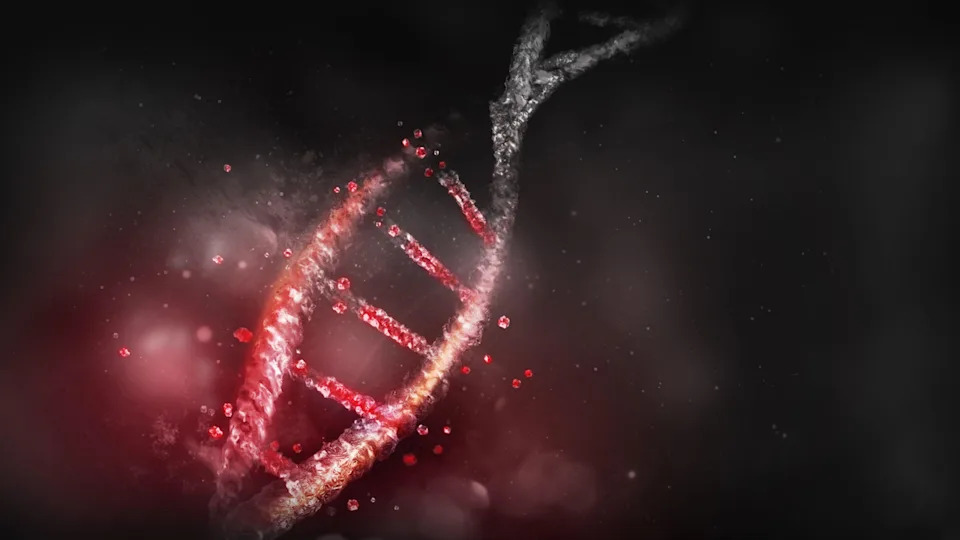 DNA breaks down over time. | Credit: Alamy
DNA breaks down over time. | Credit: AlamyThe moment a creature dies, its DNA begins to break down. Half of it degrades every 521 years on average. By about 6.8 million years, even under ideal preservation conditions in cold, stable environments, every meaningful trace is gone.
That's a huge challenge when trying to understand our evolutionary history more deeply: Two-legged primates emerged 7 million years ago in Africa, and our genus showed up around 2.6 million years ago. But DNA breaks down fast in the places our distant ancestors roamed. As a result, many of the key adaptations that make us uniquely human date to a period in which ancient DNA is indecipherable.
But a novel technique is allowing us to peer back further than DNA's expiration date in Africa, to answer long-standing questions about our ancestors. Called paleoproteomics, it's the study of ancient proteins, which last longer than DNA.
"Proteins are long-lived biomolecules capable of surviving over millions of years," Christina Warinner, a biomolecular archaeologist at Harvard University, and colleagues wrote in a 2022 paper. DNA encodes the instructions to make amino acids, which combine in long strings to make proteins. Because proteins fall apart more slowly than DNA does, they are becoming an extremely valuable resource for understanding human evolution.
Archaeologists and the DNA revolution
Archaeologists' interest in ancient DNA has skyrocketed since 2010, when researchers published a draft of the Neanderthal genome, confirming that Neanderthals mated with the ancestors of many modern humans. Since then, the technique has been used to answer a number of archaeological questions, such as when the Americas and Australia were settled, when agriculture was invented, and how languages and cultures might have spread.
But there are major drawbacks to relying solely on ancient DNA. Even though techniques for extracting DNA from very old bones have advanced significantly over the years, DNA breaks down into smaller fragments over millennia due to the effects of sunlight, heat and humidity. As a result, DNA analysis of our ancient relatives' bones and teeth has a time limit that prevents us from learning about our more distant evolution through this technique.
Related: Oldest human DNA reveals mysterious branch of humanity
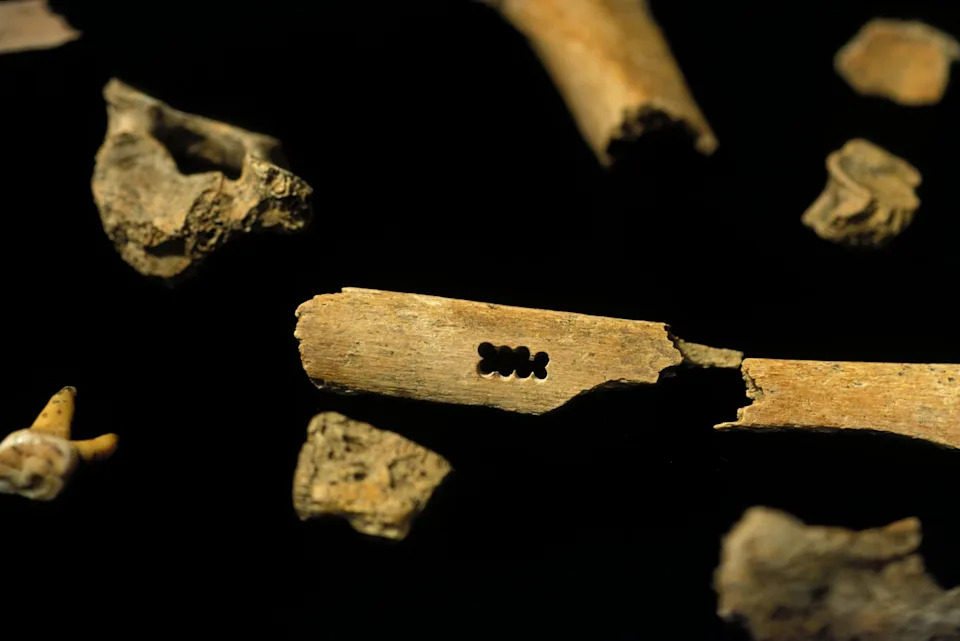 A collection of Neanderthal bones. DNA analysis of these ancient bones can only go so far because the DNA degrades over time. | Credit: Patrick AVENTURIER via Getty Images
A collection of Neanderthal bones. DNA analysis of these ancient bones can only go so far because the DNA degrades over time. | Credit: Patrick AVENTURIER via Getty ImagesThat's an even bigger problem in Africa, where most human evolution took place.
"Africa is the center of our evolutionary past, and we don't have ancient DNA in Africa beyond a scale of maybe 20,000 years at this point," Adam Van Arsdale, a biological anthropologist at Wellesley College, told Live Science. Knowing what was happening biologically with our distant ancestors millions of years ago in the core of Africa would transform our understanding of human evolution, Van Arsdale said.
An explosion in protein analysis
Proteins are an exciting target for anthropologists because they can outlast even the oldest DNA. They have fewer atoms, fewer chemical bonds, and a more compact structure, which means they are less fragile than DNA, according to Warriner and colleagues.
The first ancient proteome — a group of proteins expressed in a cell, tissue or organism — was extracted from a 43,000-year-old woolly mammoth bone in a study published in 2012. In 2019, researchers announced the oldest mammalian proteome for the time: that of a 1.9 million-year-old tooth from the extinct ape relative Gigantopithecus. And in 2025, researchers successfully extracted the oldest proteins yet, from Epiaceratherium, an extinct rhinoceros-like creature that lived in the Canadian Arctic more than 21 million years ago.
As we improve the methods for identifying proteins, anthropologists are starting to use these methods to answer questions about human evolution.
In a 2020 study published in the journal Nature, researchers analyzed the proteins in the tooth enamel of Homo antecessor, an extinct human relative that lived in Europe 800,000 years ago. They discovered that H. antecessor's proteins were different from those of H. sapiens, Neanderthals and Denisovans, making them a separate branch of our evolutionary tree rather than our direct ancestor.
In a study published in April in the journal Science, proteomic analysis was also used to figure out that a mysterious jawbone first found in the early 2000s off the coast of Taiwan was related to the Denisovans, a group of extinct human relatives. Before this, paleoanthropologists did not know whether the Denisovans had lived in that part of the world. The analysis also demonstrated that it's possible to identify the proteins found in fossils from warm, humid regions.
Our African roots
Paleoproteomics may be even more transformative for deciphering our more distant evolution. Two recent studies of fossil bones and teeth from Africa, where DNA studies are nearly impossible, highlight the method's potential.
Related: Oldest and most complete ancient Egyptian human genome ever sequenced reveals ties to Mesopotamia
In the first, published in May in the journal Science, archaeologists recovered ancient proteins from the teeth of four members of the species Paranthropus robustus, a human relative that lived between 1.8 million and 1.2 million years ago. They showed that two of the individuals were male and two were female. Surprisingly, though, the researchers discovered that one of the P. robustus individuals who was thought to be male was actually female. This suggests that some skulls previously classified as one sex of a known species may have in fact belonged to unidentified groups or newfound species.
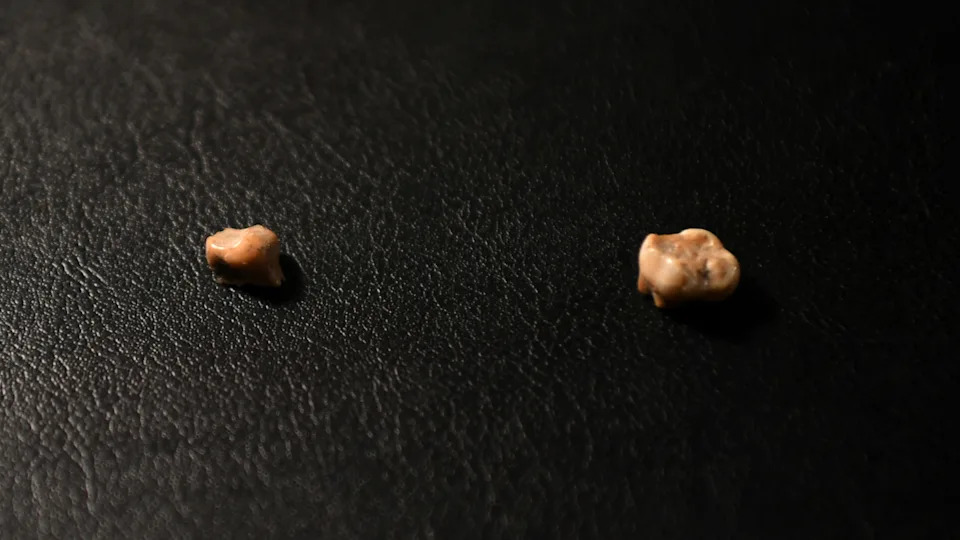 A Homo sapiens and a Neanderthal tooth. Researchers are analyzing the proteins in teeth like these to understand more about ancient humans. | Credit: MATTHIEU RONDEL via Getty Images
A Homo sapiens and a Neanderthal tooth. Researchers are analyzing the proteins in teeth like these to understand more about ancient humans. | Credit: MATTHIEU RONDEL via Getty ImagesIn the second study, published in February in the South African Journal of Science, researchers recovered the proteome from the tooth enamel of Australopithecus africanus, a human relative that lived in South Africa 3.5 million years ago. Although they were only able to identify the biological sex of the australopithecines, the researchers wrote that "these are all incredibly exciting breakthroughs that are poised to revolutionise our understanding of human evolution."
One question this analysis could help answer is whether males and females of our ancestors and relatives differed dramatically in size or features, Rebecca Ackermann, a biological anthropologist at the University of Cape Town, told Live Science. For instance, protein and sex analysis could reveal that some bones previously interpreted as males and females of the same species were actually individuals of the same sex, but from different lineages.
So far, though, scientists have successfully analyzed proteins from just a small number of ancient human ancestors . But while modern humans have more than 100,000 proteins in their body, the enamel "proteome" is tiny; it's composed of just five major proteins related to enamel formation. Still, the variation in the protein sequences can be enough to differentiate between related organisms.
Future frontiers
Analysis of the differences in those proteins likely does not provide enough resolution to answer key questions, such as how ancient human ancestors and relatives were related, Ackermann said. For instance, millions of years ago in East Africa, several two-legged primate species overlapped in time, but whether they could interbreed and create fertile hybrids is not clear from their bones alone.
Related: World's oldest DNA reveals secrets of lost Arctic ecosystem from 2 million years ago
Could ancient proteins eventually help answer that question?
Ackermann is cautiously optimistic that technology will advance enough for paleoproteomics to clarify evolutionary relationships among closely related groups.
"Whether or not we can say more about hybridization is a good question," she said.
RELATED STORIES
—130,000-year-old mammoth calf smells like 'fermented earth and flesh,' necropsy reveals
—Royal tomb in Benin has traces of human blood on its walls, hinting at human sacrifice, study finds
—Scientists discover 1 million-year-old DNA sample lurking beneath Antarctic seafloor
Even so, bone and enamel proteomes may never be detailed enough to distinguish closely related individuals in the same way genomes can, Ackermann added.
But there's a chance techniques will improve enough for scientists to extract proteins from millions-of-years-old tissues, Ackermann added.
Most proteins made by humans, including those that are part of the "dark proteome," have not been analyzed, which means we have little idea what they do, Warriner and colleagues wrote.
"The next 20 years will surely hold many surprises as we begin to apply this analytical power to answer long-standing questions about the past and innovate new solutions to old problems," they wrote.







